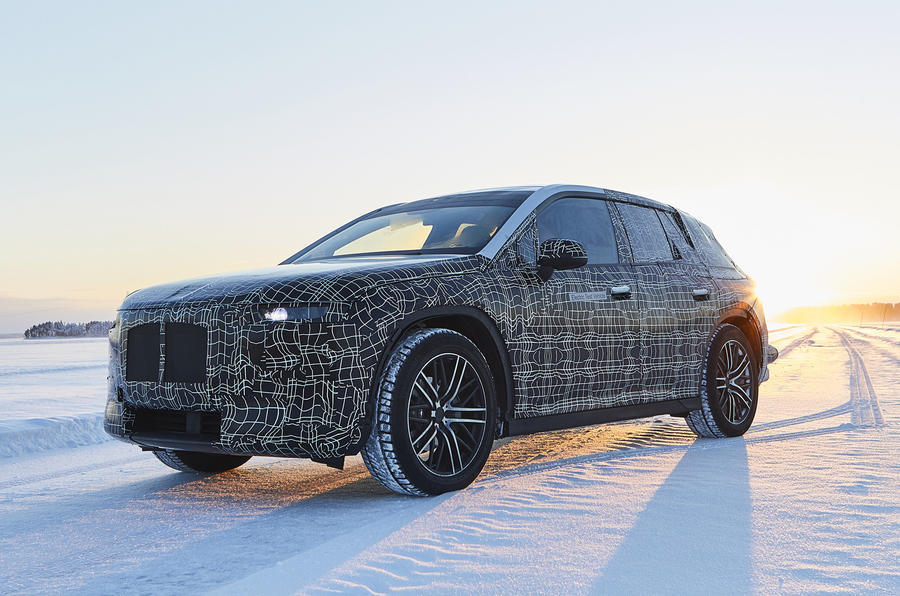BMW iNext
Production version of the semi-autonomous concept will be the first to use BMW’s versatile new architecture
The BMW iNext, an electric SUV with advanced autonomous systems, will be unwrapped on 11 November as the next step in the brand’s transition to a maker of electric vehicles.
Making its first production-spec appearance as part of a wider event looking “ahead to the future of mobility”, the iNext sits on a radical new platform and will provide the “building blocks” for the BMW Group’s future.
Official images previously showed the production car testing in prototype form in Sweden ahead of an expected sales launch in 2021. While the iNext is a similar size to the X5, BMW has said that it represents ‘Project i 2.0’, sitting outside of its planned range of electric ‘i’ SUVs as a new ‘technology flagship’ for the brand.
The test car was running at BMW’s winter testing facility in Arjeplog, Sweden, and features a number of notable differences from the concept first shown in 2018. The backwards-opening rear doors have been replaced by a conventional pair and larger B-pillars have been added. While disguised, the grille on the test car is a more standard item than the concept’s bold translucent panel that is used to house many of the autonomous systems.

The iNext will be built at BMW’s Dingolfing plant in Germany from 2021. It will be the first car from the firm to use a new platform that will be able to spawn conventional internal combustion engine (ICE) vehicles, plug-in hybrids and electric cars using the same basic architecture and on the same production line. This will underpin future BMW models from the 3 Series upwards and allow a rear-engine configuration in some.
BMW will build all of its future models on one of two platforms – one for front-wheel drive cars and one for those with rear-wheel drive or four-wheel drive.
On the latter platform, electric cars will have a rear-mounted drivetrain as standard. Plug-in hybrids will have a rear-mounted electric motor and a transversely-mounted engine driving the front wheels. Electric models will retain the classic BMW rear-wheel-drive layout.
Other options will include twin-motored, four-wheel-drive electric cars and conventional mechanical four-wheel-drive ICE models.
BMW sources say the maximum range of the electric models could be up to 450 miles in future X-series models (which are likely to have a bigger battery capacity), while the plug-in hybrids will manage a range of around 60 miles.
The new architecture will also incorporate a new autonomous technology platform that will eventually offer Level 5 autonomy – wherein the car does not require a driver. BMW showed all three prototype autonomy ‘PAD’ processing units at the 2018 LA motor show, the smallest of which will first appear in 2021 on the production iNext to offer Level 3 autonomy (hands-off and eyes-off) at up to 80mph on motorways.
The Level 4 and Level 5 autonomous systems will enter testing in 2021 on a fleet of pilot cars. Level 4 aims for ‘hands-off and mind-off’ autonomy in urban situations, while Level 5 will offer driverless urban travel at up to 43.5mph.
The controversial styling of the iNext concept reflects the production vehicle in only a ‘broad-brush’ way, according to BMW insiders. Expect the sheer surfaces, especially around the sides and rear, to be translated, along with the large windows and an interior that has much of the switchgear blended in as touch-sensitive surfaces that appear upon demand.
Read more
Insight: how BMW platforms can cope with multiple powertrains
BMW development boss: our cars will always have steering wheels
Source: Autocar
